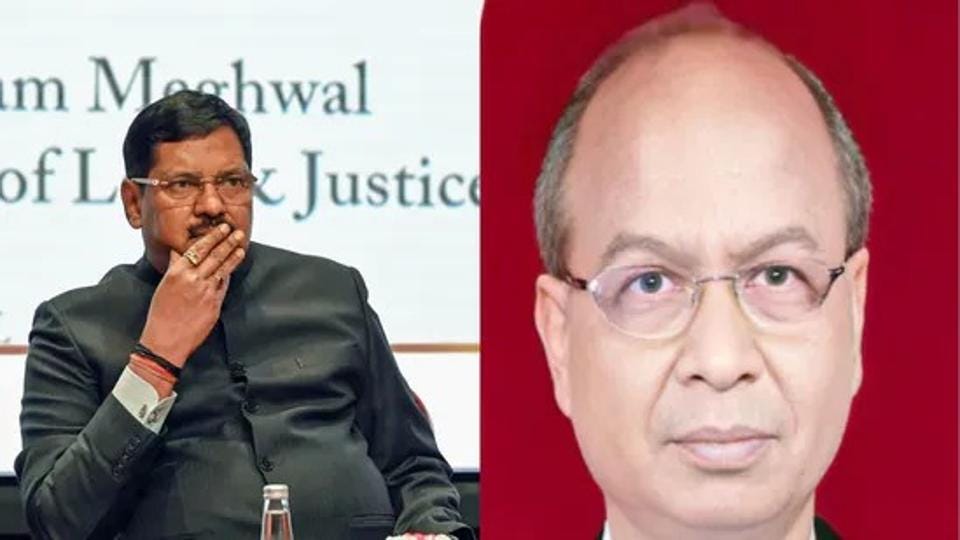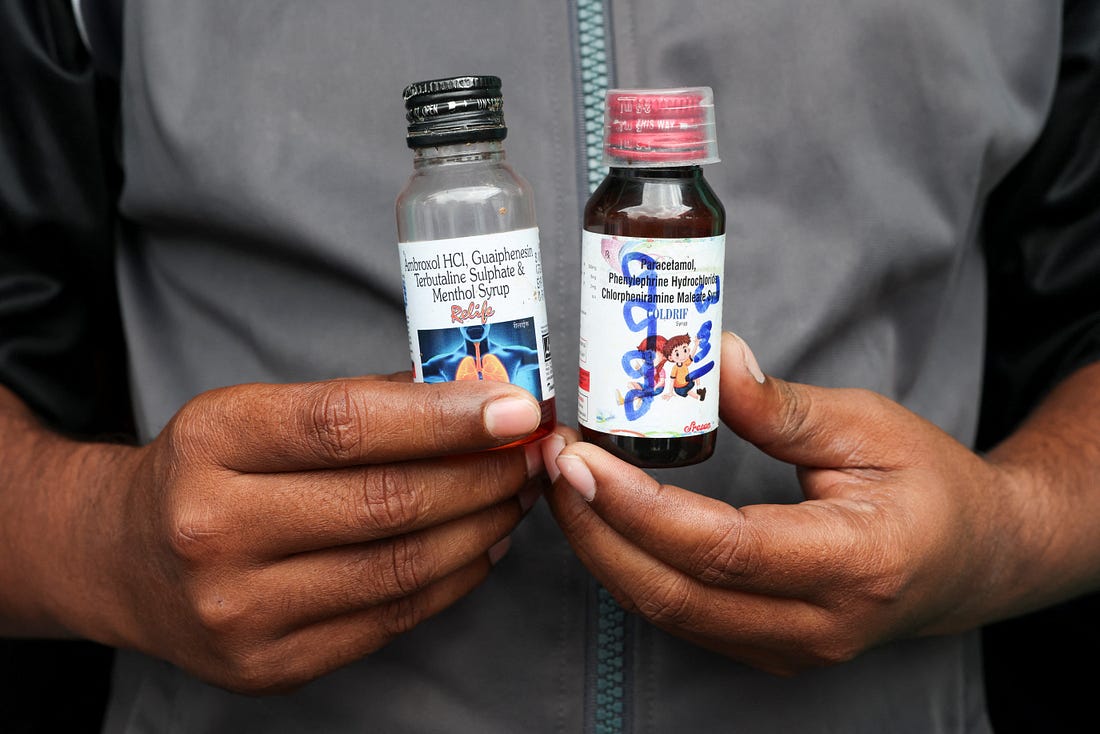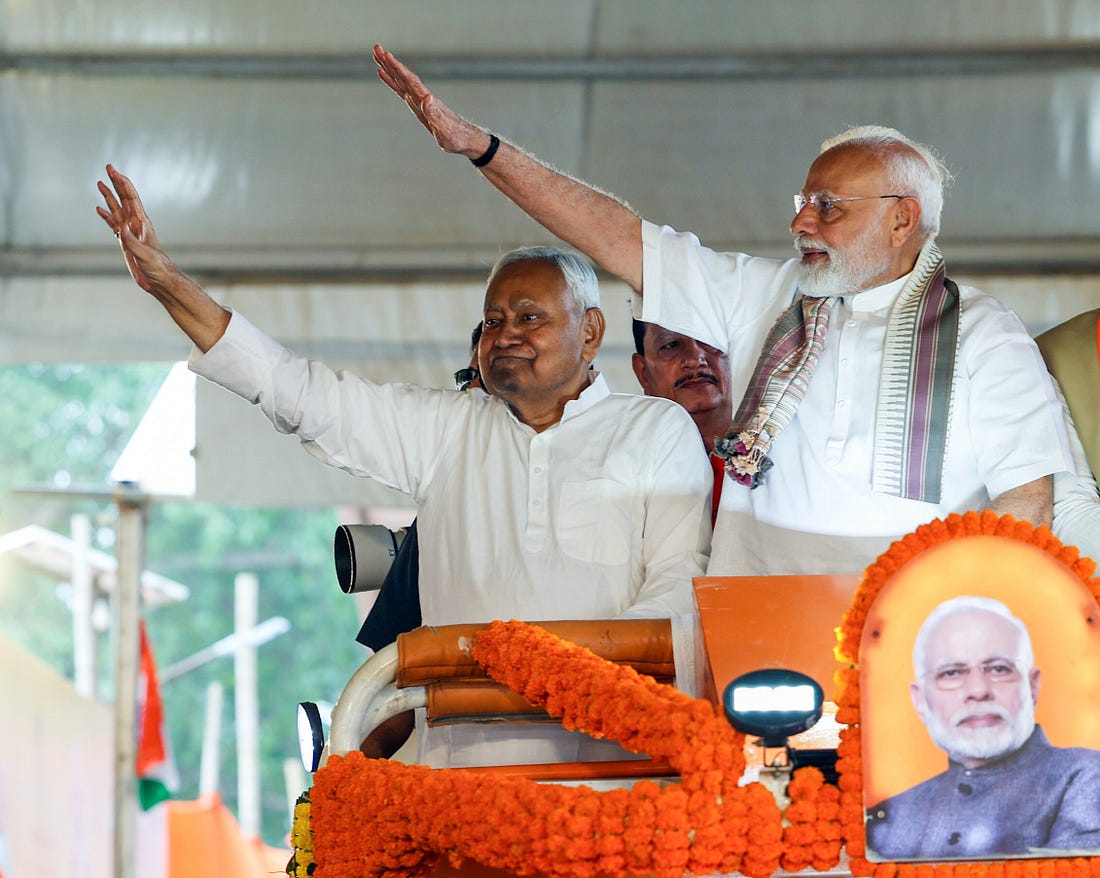What's On My Mind: Faith, misplaced anger and surpriseA weekly conversation on some topics that were on @HT_ED's mind.Good morning!Why are we surprised?When the drug regulator(s) — India has a profusion of them — and the health ministry are quick to clear Indian drug companies of using an adulterant in cough syrups exported to Africa (and that caused several deaths of children in that country), why are we surprised when the same adulterant, in cough syrups again, but made by a different Indian company, causes deaths (of children again) within the country? When the Chief Justice of India’s passing observation — he says he was misquoted by social media, but I believe everyone took his ad-libbed comment far more seriously than he expected — is weaponised, and used to target him, by social media warriors (their motive is less zeal and more eyeballs that translate into revenue), why are we surprised when a lawyer who is the very definition of a WhatsApp uncle tries to attack the CJI (claiming, a la Charles Manson, that God asked him to)? Both could have been avoided. The first if we had seen the deaths in Africa as not a conspiracy aimed at denting India’s image as a pharmacy to the world, but an indicator of a defect that would actually hurt the country’s aim of becoming that. And the second if the CJI’s comment had been taken for what it was, and influencers not suggested violence against him (one thought he was being very clever and said he was not saying that the CJI’s head had to be banged against a wall in the court, and then thought he would be cleverer and asked why people would not spit in the CJI’s face because it would attract a maximum punishment of only six months). Instead, what we have is a profusion of right-wing handles on social media sharing a video created after the fact, showing a man attacking a darker version of Gavai (another caste-stereotype that’s imminently punishable) with a shoe. We have become prickly about national pride (for all the wrong reasons; a company adulterating medicines it is exporting is actually hurting national pride), and about faith (again, for all the wrong reasons; faith is not something that needs protection; it protects us). Then, these are the messages (not even between-the-line ones but explicit) we are picking up — from political speeches, from social media influencers, from movies, and from media, so, why are we surprised? In a previous edition of my newsletter, I quoted Richard Hofstader’s 1964 essay The Paranoid Style in American Politics to try and explain events in the US, but a term he used, “uncommonly angry minds”, is as relevant now, and here, as it was back then. Why are we surprised? We, all of us, made this bed. Post script: The Delhi Police, usually proactive when it comes to registering cases, has sought to play it very cool in this instance. Sure, they may explain it away as stemming from the CJI’s own desire, but this is not a civil matter where settlement and compromise is the norm. Then, why are we surprised? A real “cottage” industryA Tamil Nadu-based manufacturer of drugs, Sresan Pharmaceuticals is in the news for making the cough syrup that killed 22 children in Madhya Pradesh. The company is what is popularly called a MSME in India, a micro, small, and medium enterprise. Such businesses form the backbone of the Indian economy, but the majority have a side that, while not exactly hidden, does not get as much attention as it deserves. Many of these businesses survive on wafer thin margins. As the late Arun Jaitley once told me around the time the Goods and Services Tax regime was being implemented, at least some of these businesses are competitive because they either do not pay tax, or pay far less of that than they should. But tax evasion is not a competitive strategy. Many small businesses also pay very little attention to quality. Indeed, it can be argued that the death of India’s toy industry in the 2000s came about as much because of the poor quality of Indian toys as competition from cheap Chinese imports. Of the around 10,500 MSMEs in the pharma business in India, only 2,000 have complied with the so-called Schedule M standards that prescribe Good Manufacturing Practices (GMPs), a requirement for export to many countries. The other 8500 have till January 1 to adopt this. It is not clear whether Sresan was among the 2,000 or the 8,500, but it is unlikely to have made a difference (which, in turn, says a lot about the quality of drug regulation in the country). Anyone serious about MSMEs (and various Union ministers keep talking of them), should launch a drive to help them up their quality, much like CII did with Indian auto-parts companies in the early 2000s — it found two top Japanese quality gurus and set up clusters of companies, focusing on both total quality management and total productive maintenance, TQM and TPM. Soon, cluster-companies started winning the world’s top quality award, the Deming Medal awarded by the Japanese Union of Scientists and Engineers. Who needs masks when we have faith?Our obsession with faith is increasingly manifesting itself in an overwhelming emphasis on the ritualistic (or materialistic) aspect of festivals, accompanied by (I would argue), a decline in the understanding of their spiritual aspects. So, Deepavali, the Festival of Lights, has increasingly come to be associated with fireworks — never mind that these are believed to have come to India along with the Mughals, and never mind that the first modern fireworks factory did not emerge till the 19th century (in Calcutta). Thanks to a Supreme Court order, fireworks are banned in Delhi and the NCR (given that they are polluting, and Deepavali comes at a time when weather and farm fires have already turned the region’s air noxious), although recent proceedings in the Supreme Court suggest that a rethink (an imprudent one) may be in the works. Now, the Delhi government has asked the Supreme Court to allow so-called green crackers — a request subsequently endorsed by the Union government — although there is, in reality, no such thing (is a cigarette that is 30% less harmful than normal cigarettes reason to start smoking?) Then, why are we surprised? Understanding BiharThat is a SEO-friendly section headline; I would never be presumptuous enough to say that. But what the HT newsroom has done over the past week — and will continue to do till November 16 — is to help you understand the factors at play in the Bihar assembly election on November 6 and 11. The most important thing to understand about state politics in Bihar is that no one has been able to be part of the ruling alliance without Nitish Kumar’s Janata Dal (United). If he has governed the state for almost 20 years, swinging to and from partners across the ideological divide with impunity, it is because his appeal translates into votes from so-called extreme backward classes (EBCs), women, and upper castes (who presumably want progress) that have meant the difference between being in Opposition and being in power. That could explain why he remains chief minister and the chief ministerial candidate despite his party now becoming the junior partner in the NDA alliance led by the BJP. The most important thing to understand about this election in Bihar is that it marks the passing of a generation. Nitish Kumar is keeping indifferent health, and Lalu Prasad Yadav’s poor health has meant that he will be only an invisible presence (if that) in his party’s campaign effort. And the most important person in this election — results be damned — is Prashant Kishor, the state’s prodigal son, who is hoping to do an NTR in the state. My colleagues, Roshan Kishore, Abhishek Jha and Nishant Ranjan — all from Bihar — traced the history of politics in Bihar through a detailed analysis. Kishore and Jha also asked the all-important question: will this year’s election be like 2020 (when the state election was the closest it has been so far) or 2024 (when the NDA of the BJP and the JD(U) rediscovered its mojo). The smashing machineI have no idea how the movie is — and will likely not try to find out — but the soundtrack is something else. I may (or may not) have written previously in my newsletter about Nala Sinephro, the talented musician who is part of the new jazz scene in the UK right now (and what a scene it is, but more on that elsewhere). Sinephro plays the harp, synth, and piano and has taken experimental jazz in an entirely different direction. On the soundtrack — and this is usually the kind of movie that one would have expected to lean towards classic or even heavier rock — the young composer shows why, leveraging the disorderly order and quiet power that only the best jazz possesses.
Till next week. Send in your bouquets and brickbats to sukumar.ranganathan@hindustantimes.com |







